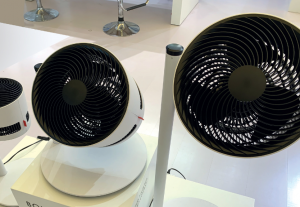In recent years, electric fan technology has developed rapidly, and various products such as high-end, silent, and intelligent products have emerged one after another. This year’s outbreak of the epidemic has made more and more consumers choose to use electric fans to escape the heat in summer. However, the huge price difference and uneven quality of electric fan products make consumers feel confused when choosing products.(egg boiler)
In order to further regulate the development of the electric fan industry, improve product technology, and protect the rights and interests of consumers, the mandatory national standard of “Electric Fan Energy Efficiency Limits and Energy Efficiency Grades” (hereinafter referred to as the electric fan energy efficiency standard) (TSIDA)has been revised and will be revised on August 26, 2020. Public comments on the draft of the opinion.
DC electric fans are included in the scope of application(egg boiler)
The current electric fan energy efficiency standard is GB 12021.9-2008 “AC electric fan energy efficiency limit value and energy efficiency grade”. The standard was released in 2008 and has been implemented for 12 years. During this period, with the emergence of new technologies, new products, and new processes, the entire electric fan industry has undergone tremendous changes, and the standards for the energy efficiency test methods of external electric fans have been revised. Therefore, the standard revision is imperative.(egg boiler)
The revised standard includes electric fans driven by DC motors into the scope of application of the standard. Therefore, the name of the standard is changed from “Limited Values and Energy Efficiency Grades of AC Fans” to “Limited Values and Energy Efficiency Grades of Electric Fans”(TSIDA). According to He Zhenbin, the person in charge of summer product performance development of Midea’s electrical appliances division, when the GB 12021.9-2008 standard was revised, DC technology was not widely used in the field of electric fans. After these years of development, more and more companies introduced DC motors. The driven electric fan, and the DC electric fan has the characteristics of low noise and high energy efficiency when working in a low gear, which are deeply loved by consumers. Therefore, this type of product is included in the scope of the standard when it is revised.
At the same time, the new standard also adds the definition of wind-gathering fans, which are table fans, wall fans, table fans, and floor fans with a ratio of the inner circle air volume to the outer circle air volume not less than 0.9. In other words, in terms of the classification of electric fan products, in addition to the classification of table fans, rotary fans, wall fans, table fans, floor fans, and ceiling fans, each category of products is divided according to the diameter of the fan blade. For each fan Products within the range of leaves are subject to energy efficiency assessments.(egg boiler)
Since it has been 12 years since the last revision, the industry has paid great attention to this revision. According to a drafter of the standard, the industry is very concerned about the revision of the standard, and the total market sales of companies participating in the revision of the standard have reached more than 70% of the overall scale. Mainstream companies including Midea, Gree, Airmate, and Pioneer are all participating. The drafting team held 5 standard seminars, conducted a large number of energy efficiency tests, collected more than 300 sets of energy efficiency data, and adjusted the energy efficiency test methods several times.(TSIDA)
Post time: Nov-03-2020

